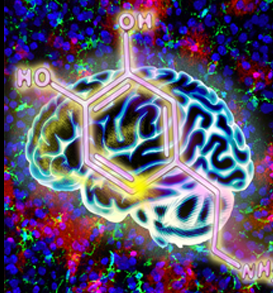
On June 1, 2010, the Proceedings of the National Academy of Sciences USA published a research article from ION entitled "Functional feedback from mushroom bodies to antennal lobes in the Drosophila olfactory pathway". This work was carried out by postdoctoral fellow Dr. Aiqun Hu and graduate student Wei Zhang from the Laboratory of Dr. Zuoren Wang at ION.
Somatosensory neuron types were identified by high-coverage single-cell RNA-sequencing and functional heterogeneity, as reported on Dec. 22th in Cell Research. High-coverage single-cell RNA-sequencing was performed to identify neuron types by size-based hierarchical clustering. Physiological functions were determined by the responses of somatosensory neuron to peripheral stimuli recorded by in vivo patch clamp.
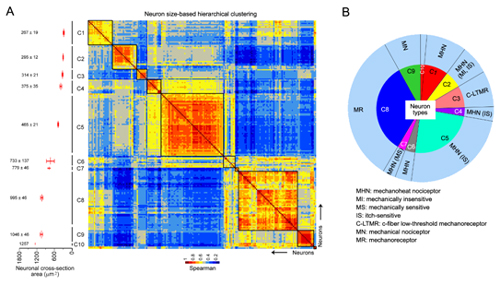
In a recent study, Dr. DU Jiulin’s lab found that Dopamine release can be evoked by a hedonic olfactory stimulus, monitored in real time, and traced to its circuit origin in the transparent brain of zebrafish larvae. This work demonstrated for the first time that sensory-evoked dopamine release can be successfully monitored in the brain of an awake small organism.
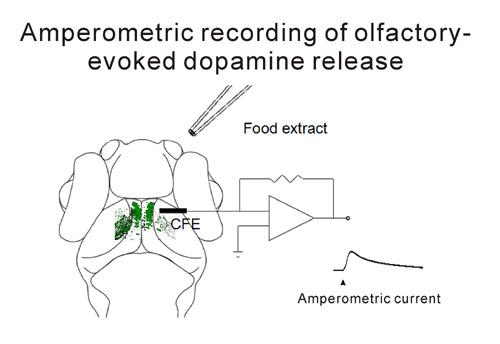
In a recent study, researchers at the Institute of Neuroscience, reported that Transient receptor potential canonical (TRPC) 6 blocked the interaction between APP and γ-secretase to specifically suppress Aβ production. TRPC6 specifically interacts with APP (C99), but not with Notch, and prevents C99 interaction with presenilin 1 (PS1), leading to inhibition of γ-secretase cleavage of APP and Aβ production. A fusion peptide derived from TRPC6 also reduced Aβ levels without affecting Notch cleavage.

A Delegation from the Brain Science Institute of the Korea Institute of Science and Technology (KIST-BSI) visited ION on November 8, 2015. Members included Profs. Dennis Choi (Director General of KIST-BSI), Changjoon Justin Lee and Dongjin Kim.
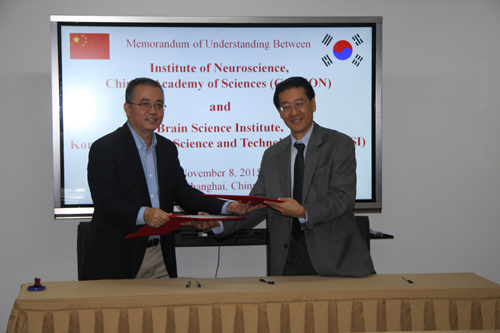
In a recent study, Dr. SUN Qiang’s research group successfully accelerated the sexual maturity of juvenile cynomolgus monkeys by testicular xenografting. Testicular tissues were obtained from one 14-month wild-type (WT) and one 27-month HA-hMeCP2-2a-GFP transgenic(Tg) monkey, and implanted subcutaneously in adult castrated nude mice.

In a recent study published online in Cell, Dr. YU Xiang’s research group demonstrated a novel mechanism through which the pruning and maturation of dendritic spines in the developing brain are coordinated by the cadherin/catenin cell adhesion complex.
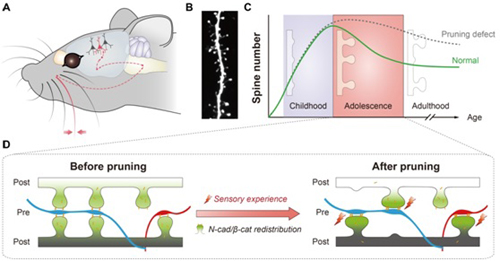
The 2015 ION Mini-Symposium on Systems Neuroscience was held at the Institute of Neuroscience on July 4th, 2015. Profs. Jose Carmena (University of California, Berkeley, USA), Vikaas Sohal (University of California, San Francisco, USA), Nirao Shah University of California, San Francisco, USA ), Botond Roska (University of Basel, Switzerland) presented their recent findings. Prof. Muming Poo hosted this symposium. More than 160 researchers from ION attended this symposium.
In a recent study, Dr. ZHOU Jiawei’s lab found that a Rho family GEF protein Vav2 is required for glial cell line-derived neurotrophic factor (GDNF) and its cognate receptor Ret-modulated DAT cell surface expression and transporter activity.
A recent study, published in the June 24th issue of the Journal of Neuroscience, demonstrated that expression of a single transcription factor efficiently induced astrocyte-to-neurons conversion in the intact brain. This work provides a novel approach to obtain functional neurons in the intact brain and a potential therapeutic solution for neural regeneration.
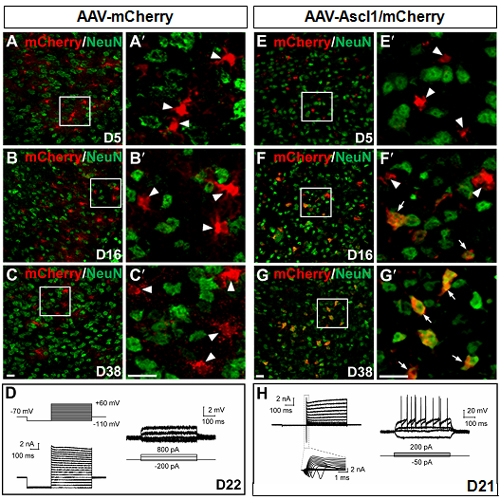
The 2015 ION Mini-Symposium on Glial Cell Development and Function was held at the Institute of Neuroscience on June 19th, 2015. Profs. Benjamin Deneen (Baylor College of Medicine, USA), Changjoon Justin Lee (Institute of Science & Technology, Korea), Masamitsu Iino (University of Tokyo, Japan), Marco Prinz (University of Freiburg, Germany) presented their recent findings.
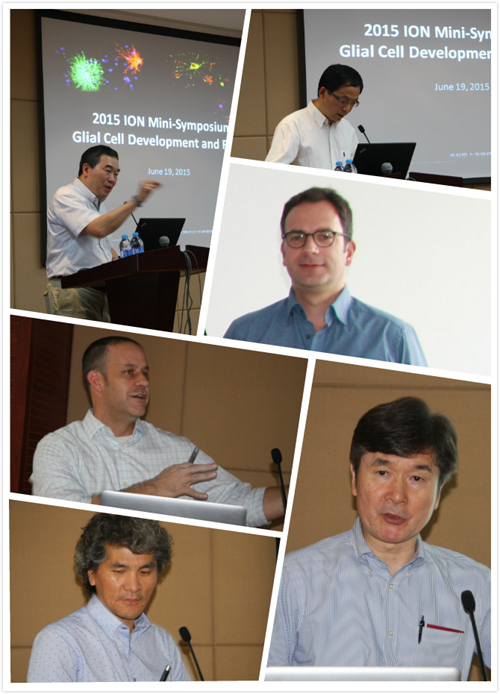
In a recent study, graduate student WANG Liang under the supervision of Dr. POO Mu-ming, examined the function of brain-derived neurotrophic factor (BDNF), which is expressed in adult-born GCs, in regulating their dendrite morphogenesis.
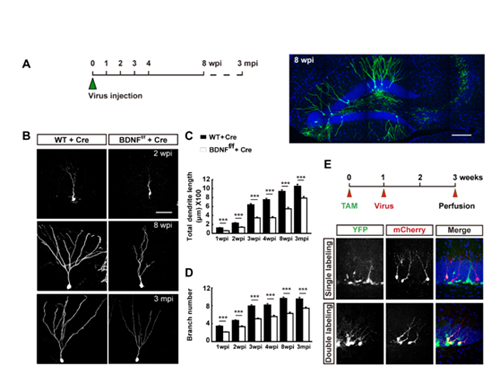
A recent study published on the Journal of Cell Biology demonstrated that the neuron migration is controlled by three highly dynamic contraction centers (CCs) which are regulated by guidance cues. This work was performed mainly by graduate student JIANG Jian in the laboratory of POO Mu-ming.
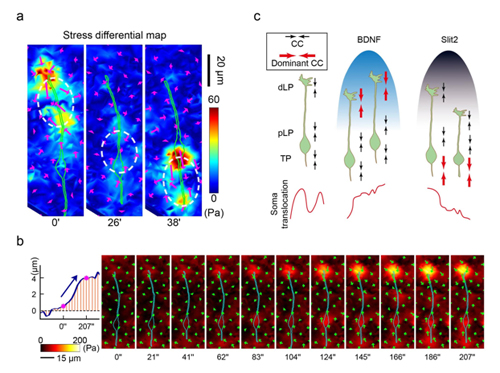
In a recent study, Dr. WANG Zheng’s lab proposed a novel method to unveil the intrinsic features of functional brain connectivity matrices of discriminative power for group comparison. Morespecifically, by encouraging co-selection of edges connected to the same node in the connectivity matrix, the discriminative edges are preserved to maximumextent.

During May 14 - 26, Dr. Jiulin Du was invited to attend an international symposium on “Combining Information from Multiple Modalities Across the Animal Kingdom” held by HHMI at Janelia Farm, and was invited to visit University of Michigan, Yale University and Harvard University, and gave seminars about neuromodulation-mediated cross-modal modulation and sensorimotor transformation control”.